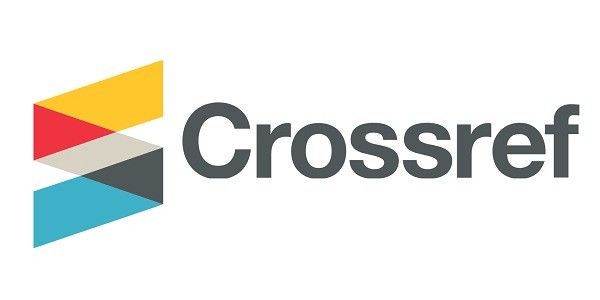Abstract
Growing insights from neuroscience—here, understood as an umbrella term for a number of empirical disciplines that study the relation brain, nervous system, genes, and behaviour—and its inquiries into how human behaviour and well-being is affected by interiors can enrich and inform the design of interiors and its properties innovatively. Interior design education can play a key role in linking the insights stemming from research and turn the question of human, experiential responsiveness into an elementary perspective of the design process.
In this paper, we explain a pedagogical method developed for one of our graduate studios that addresses this issue and create a framework for a neuroscience-informed focus. Additionally, we illustrate the outcomes of student work created in this studio through two projects, each having a unique focus relating to interiors and the question of human behaviour and well-being, i.e., visual complexity and affordances. With the establishment of this master studio, we aim to provide students with an awareness and insights into how the many fields of study within neuroscience can facilitate, support, confirm, or adjust design knowledge.
Publication Date
1-30-2022
References
Albright, D. T. (2015). Neuroscience for architecture. In S. Robinson, & J. Pallasmaa (Eds.), Mind in architecture: Neuroscience, embodiment, and the future of design (pp. 197–217). MIT Press.
Aldama, F. L. (2015). The science of storytelling: Perspectives from cognitive science, neuroscience, and the humanities. Projections, 9(1), 80–95. https://doi.org/10.3167/proj.2015.090106
Andersen, E., & Maier, A. (2019). The attentional guidance of individual colours in increasingly complex displays. Applied Ergonomics, 81, 1–6. https://doi.org/10.1016/j.apergo.2019.102885
Arbib, M. (2015). Toward a neuroscience of the design process. In S. Robinson & J. Pallasmaa (Eds.), Mind in architecture:Neuroscience, embodiment, and the future of design (pp. 75–98). MIT Press.
Arnheim, R. (1977). The dynamics of architectural form. University of California Press.
Berlyne, D. E. (1971). Aesthetics and psychobiology. Appleton Century Crofts.
Brown, D. R., & Owen, D. H. (1970). Visual and tactual complexity: A psychophysical approach to perceptual equivalence. Perception & Psychophysics, 7, 225–228. https://doi.org/10.3758/BF03209366
Cárdenas, R. A., Harris, L. J. (2006). Symmetrical decorations enhance the attractiveness of faces and abstract designs. Evolution and Human Behavior, 27(1), 1–18. https://doi.org/10.1016/j.evolhumbehav.2005.05.002
Day, J., Theodorson, J., & Van Den Wymelenberg, K. (2012). Understanding controls, behaviors and satisfaction in the daylit perimeter office: A daylight design case study. Journal of Interior Design, 37(1), 17–34. https://doi.org/10.1111/j.1939-1668.2011.01068.x
Djebbara, Z., Fich, L. B., Petrini, L., & Gramann, K. (2019). Sensorimotor brain dynamics reflect architectural affordances. Proceedings of the National Academy of Sciences of the United States of America, 116(29), 14769–14778. https://doi.org/10.1073/pnas.1900648116
Evensen, K. H., Raanaas, R. K., Hagerhall, C. M., Johansson, M., & Patil, G. G. (2015). Restorative elements at the computer workstation: A comparison of live plants and inanimate objects with and without window view. Environment and Behavior, 47(3), 288–303. https://doi.org/10.1177/0013916513499584
Forsythe, A., Nadal, M., Sheehy, N., Cela-Conde, C. J., & Saey, M. (2011). Predicting beauty: Fractal dimension and visual comlexity in art. British Journal of Psychology, 102(1), 49–70. https://doi.org/10.1348/000712610X498958
Gepshtein, S., & Snider, J. (2019). Neuroscience for architecture: The evolving science of perceptual meaning. Proceedings of the National Academy of Sciences of the United States of America, 116(29), 14404–14406. https://doi.org/10.1073/pnas.1908868116
Gibson, J. J. (1966). The senses considered as perceptual systems. George Allen & Unwin.
Gibson, J. J. (1979). The ecological approach to visual perception. Houghton Miffin.
Grafe, C., Pimlott, M., & Stuhlmacher, M. (Eds.). (2004). Ornament: Decorative traditions in architecture (OASE, Vol. 65). NAi Publishers.
Holl, S., Pallasmaa, J., & Pérez-Gómez, A. (2006). Questions of perception: Phenomenology of architecture. William Stout Publishers.
Joye, Y. (2007). Architectural lessons from environmental psychology: The case of biophilic architecture. Review of General Psychology, 11(4), 305–328. https://doi.org/10.1037/1089-2680.11.4.305
Kallai, J., Makany, T., Csatho, A., Karadi, K., Horvath, D., Kovacs-Labadi, B., Jarai, R., Nadel, L., & Jacobs, J. W. (2007). Cognitive and affective aspects of thigmotaxis strategy in humans. Behavioral Neuroscience, 121(1), 21–30. https://doi.org/10.1037/0735-7044.121.1.21
Kandel, E. R., Schwartz, J. H. &, Jessell, T. M. (2012). Principles of neural science (5th ed.). McGraw-Hill.
Kandel, E. R. (2012). The age of insight: The quest to understand the unconscious in art, mind and brain from Vienna 1900 to the Present. Random House.
Kaplan, R., & Kaplan, S. (1989). The experience of nature: A psychological perspective. Cambridge University Press.
Karakas, T., & Yildiz, D. (2020). Exploring the influence of the built environment on human experience through a neuroscience approach: A systematic review. Frontiers of Architectural Research, 9(1), 236–247. https://doi.org/10.1016/j.foar.2019.10.005
Kellert, S. R., Heerwagen, J. & Mador, M. (Eds.) (2008). Biophilic design: The theory, science and practice of bringing buildings to life. John Wiley & Sons.
Kim, D., Lee, J. H., & Ha, M. (2014). Exploring perceptions of designers and medical staff in South Korea about design elements for the elder-friendly hospital. Journal of Interior Design, 39(4), 15–32. https://doi.org/10.1111/joid.12034
Kotabe, H., Kardan, O., & Berman, M. (2016). The order and disorder: Deconstructing visual disorder and its effect on rule-breaking. Journal of Experimental Psychology: General, 145(12), 1713–1727. https://doi.org/10.1037/xge0000240
Li, W., & Gilbert, C. D. (2002). Global contour saliency and local colinear interactions. Journal of Neurophysiology, 88(5), 2846–2856. https://doi.org/10.1152/jn.00289.2002
Mallgrave, H. F. (2011). The architect's brain: Neuroscience, creativity, and architecture. Wiley-Blackwell.
Maxwell, L. E. (2007). Competency in child care settings. Environment and Behavior, 39(2), 229–245. https://doi.org/10.1177/0013916506289976
Michels, M., Storgaard, E., & Somers, I. (2019). Back to basics in interiors education: The morphology of interior space. Interiors, 9(2), 1–21. https://doi.org/10.1080/20419112.2019.1589691
Necipoğlu, G., & Payne, A. (Eds.). (2016). Histories of ornament: From global to local. Princeton University Press.
Olinger, M. S. (2012). Making a difference: Resident-focused models for memory care facilities. Journal of Interior Design, 37(3), v–xii. https://doi.org/10.1111/j.1939-1668.2012.01076.x
Payne, A. (2012). From ornament to object: Genealogies of architectural modernism. Yale University Press.
Pérez-Gómez, A. (2008). Built upon love: Architectural longing after ethics and aesthetics. MIT Press.
Petermans, A., Janssens,W., & Van Cleempoel, K. (2013). A holistic framework for conceptualizing customer experiences in retail environments. International Journal of Design, 7(2), 1–18.
Pinker, S. (2003). The blank slate: The modern denial of human nature. Penguin Books.
Polat, U., & Sagi, D. (1994). The architecture of perceptual spatial interactions. Vision Research, 34(1), 73–38. https://doi.org/10.1016/0042-6989(94)90258-5
Quan, X., Joseph, A. & Nanda, U. (2017). Developing evidence-based tools for designing and evaluating hospital inpatient rooms. Journal of Interior Design, 42(1), 19–38. https://doi.org/10.1111/joid.12091
RAAAF (n.d.). The end of sitting. https://www.raaaf.nl/en/projects/927_the_end_of_sitting
Rasmussen, S. E. (1959). Experiencing architecture. The MIT Press.
Rietveld, E., & Kiverstein, J. (2014). A rich landscape of affordances. Ecological Psychology, 26(4), 325–352. https://doi.org/10.1080/10407413.2014.958035
Robinson, S., & Pallasmaa, J. (Eds.). (2015). Mind in architecture: Neuroscience, embodiment, and the future of design. MIT Press.
Ruggles, D. H. (2017). Beauty, neuroscience & architecture. Fibonacci.
Salingaros, N. (2014). Complexity in architecture and design. Oz, 36, 18–25. https://doi.org/10.4148/2378-5853.1527
Shepley, M. M., & Danko, S. (2017). Design as healing: The next generation of research-informed practice. Journal of Interior Design, 42(1), 5–7. https://doi.org/10.1111/joid.12090
Starr, G. (2015). Feeling beauty: The neuroscience of asthetic experience. The MIT Press.
Storgaard, E., & Michels, M. (2019). Morphology of interiors: Fragments of space examined. University Press Antwerp.
Sussmann, A., & Hollander, J. (2015). Cognitive architecture: Designing for how we respond to the built environment. Routledge.
Taylor, R. (2006). Reduction of physiological stress using fractal art and architecture. Leonardo, 39(3), 245–251. https://doi.org/10.1162/leon.2006.39.3.245
Van Den Berg, A. E., Hartig, T., & Staats, H. (2007). Preference for nature in urbanized societies: Stress, restoration, and the pursuit of sustainability. Journal of Social Issues, 63(1), 79–96. https://doi.org/10.1111/j.1540-4560.2007.00497.x
Van Geert, E., & Wagemans, J. (2020). Order, complexity, and aesthetic appreciation. Psychology of Aesthetics, Creativity, and the Art, 14(2), 135–154. https://doi.org/10.1037/aca0000224
Vartanian, L., Kernan, K., & Wansink, B. (2017). Clutter, chaos, and overconsumption: The role of mind-set in stressful and chaotic food environments. Environment and Behavior, 49(2), 215–223. https://doi.org/10.1177/0013916516628178
von Meiss, P. (2011). Elements of architecture: From form to place. Routledge.
Young, K., & Saver, J. L. (2001). The neurology of narrative. SubStance, 30(1/2), 72–84.https://doi.org/10.2307/3685505
Submitted Date
2021-09-30
Accepted Date
2021-12-24
First Page
5
Last Page
26
Recommended Citation
Storgaard, E., Michels, M., & Somers, I. (2022). Towards Responsive Interiors: Practicing Neuroscience-Informed Design Approaches in Interior Design Education. Interiority, 5 (1), 5-26. https://doi.org/10.7454/in.v5i1.183
Creative Commons License

This work is licensed under a Creative Commons Attribution-NonCommercial 4.0 International License
Author(s) retain the copyright of articles published in this journal, with first publication rights granted to Interiority.






